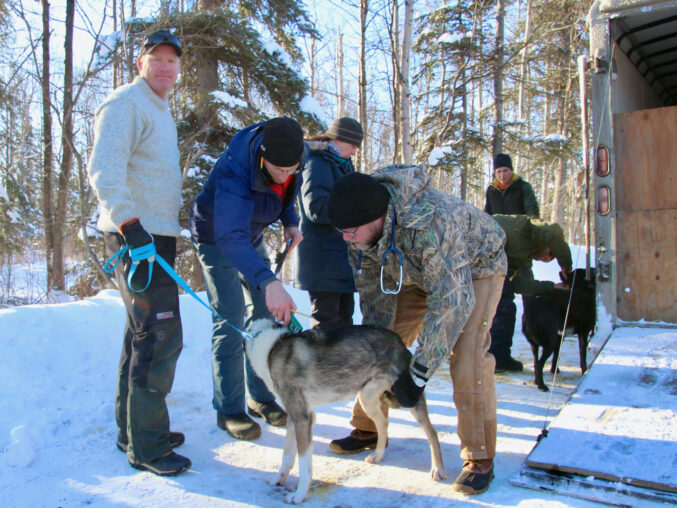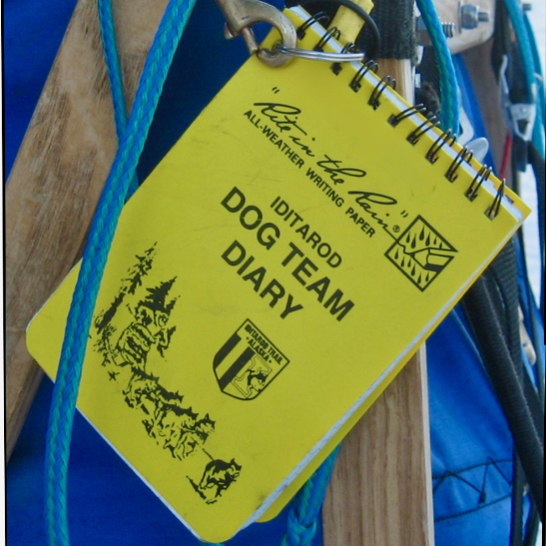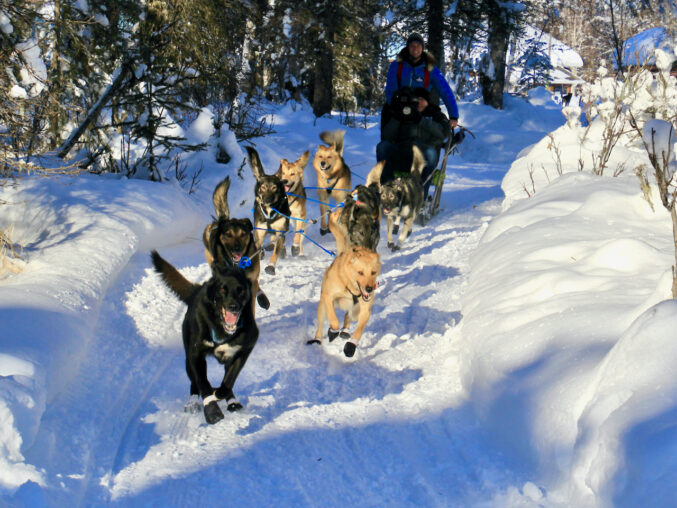Observing the triad of interaction between mushers, canine athletes and veterinarians is the objective for the teacher’s field trip to Vet Check at Iditarod Headquarters. The sled dog has remarkable physiological properties that make it the envy of human athletes. The sled dog is often described as indomitable and revered for its spirit, courage, strength, determination and faith. The sled dog has special adaptations for the rigors of the northern climate. With a well-planned run, rest and feeding schedule the sled dog can go hour after hour and day after day. By the time a team finishes Iditarod, the dogs will have travelled the distance of forty marathon, standing at the finish line ready for the 41st marathon.
The veterinary team works with mushers and dogs before, during and after the race. The team consists of 45-50 veterinarians. All vets are certified by the International Sled Dog Veterinarian Medical Association (ISDVMA). There’s also a large team of Veterinary Technicians working with the mushers and athletes. Pre-race screenings include an EKG, complete blood counts and chemical panels. The dogs are all micro chipped and dewormed. On the day of Vet check, the teachers observed the veterinarians in action with the pre-race physicals.
Out on the trail, the vets follow the acronym HAW&L when examining the dogs at each of the checkpoints. As a team arrives, the vets observe the canine athletes for anything out of the ordinary such as a limp, a sagging tug line or other body language. The vets ask the musher if they have concerns about any of the dogs and how the dogs are eating. Then the vets go through the team checking heart and hydration, attitude and appetite, weight then legs and lungs. The vets make notes in the vet book that each musher carries so that information regarding each dog goes to vets at the next checkpoint.
After spending the morning at Iditarod Headquarters observing vet check, the group headed north to Willow to meet Matthew Failor at his 17th dog Kennel. Failor is an eleven year veteran of the Iditarod, Kuskokwim 300 Champion and multi-time humanitarian award winner in mid distance racing.
Matthew introduced the teachers to all the 17th Dog athletes. The teachers were also schooled on musher gear, mandatory gear, dog care and nutrition. As the final educational component of the day, Failor hooked up a dog team and headed out for a training run. Teachers saw the whole process – harnessing, booting and departing. Many of the teachers commented on how impressed they were with the special attention paid to each dog using the right size and style of harness and suitably sized booties. No question, the dogs were excited to run. There was plenty of barking and lunging before the snow hook was pulled but the instant the dogs took to the trail, they were all business putting every ounce of their energy into running and pulling. The dogs that remained in the kennel joined in the pandemonium and cacophony while harnessing and hooking up but like those in harness, they settled down immediately when the team left the yard knowing that tomorrow it would be their turn to run.
Using HAW&L in the Classroom
How might teachers use the HAW&L check up with students in the classroom or athletes on the field? With minor changes, students or athletes can do a self-assessment of their own behaviors by asking themselves some very simple questions then ranking themselves on a 5 point scale. Is my HEART in the right place – am I kind, concerned and caring toward others? Am I staying properly HYDRATED? Is my ATTITUDE like a cold which nobody wants to catch or is my attitude positive and worth passing around? How is my APPETITE for learning – would I fall in the “Picky” category or “Voracious” category? While the “W” stands for weight for sled dogs, that can be modified to WISDOM – do I make wise choices? The “L” for Legs and lungs can be modified to LISTEN, asking do I listen and soak information up like a sponge? Doing a personal “Check Up” can be tailored to any grade level and it’s a powerful tool for self-assessment leading to self-improvement.
The day was on sight experiential learning at its best. Teacher’s returned to the conference center in Anchorage with much information about the excellent dog care provided by the Iditarod veterinary team as well as valuable information about mushing shared by an Iditarod veteran. All of this knowledge will be used to provide richer learning experiences for their students through the theme of Iditarod.






